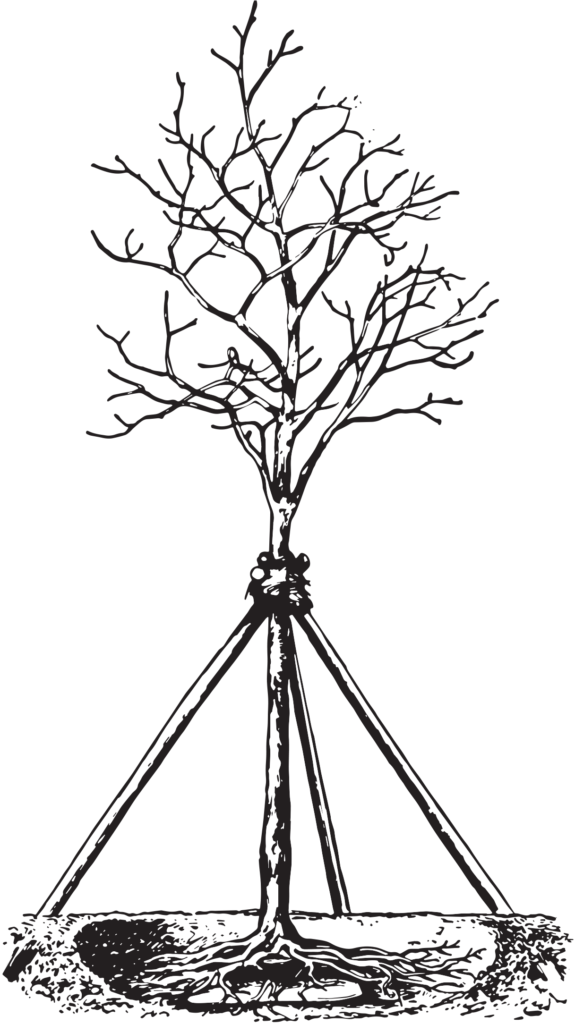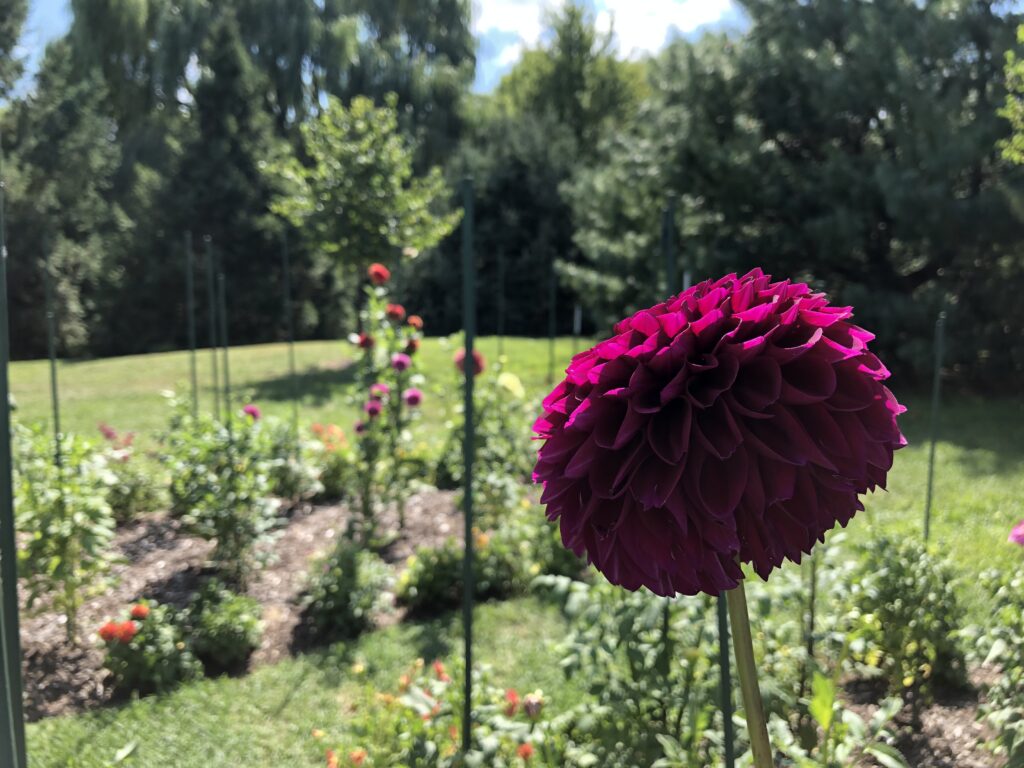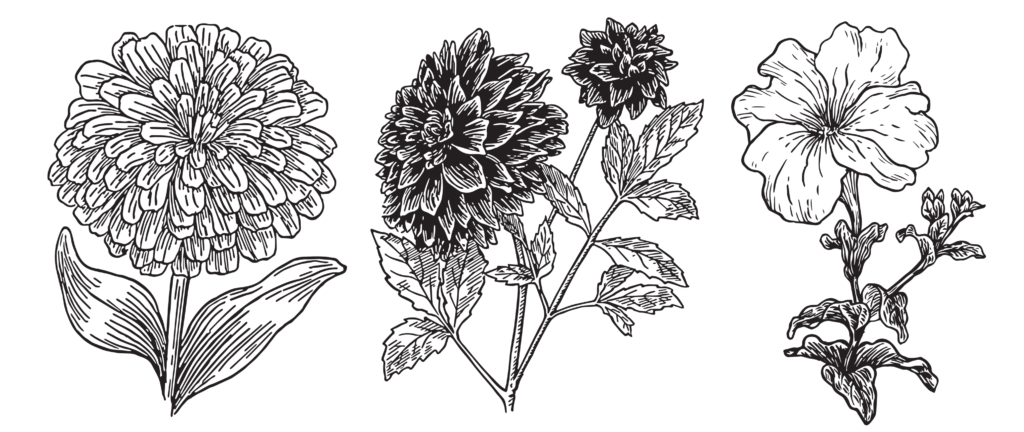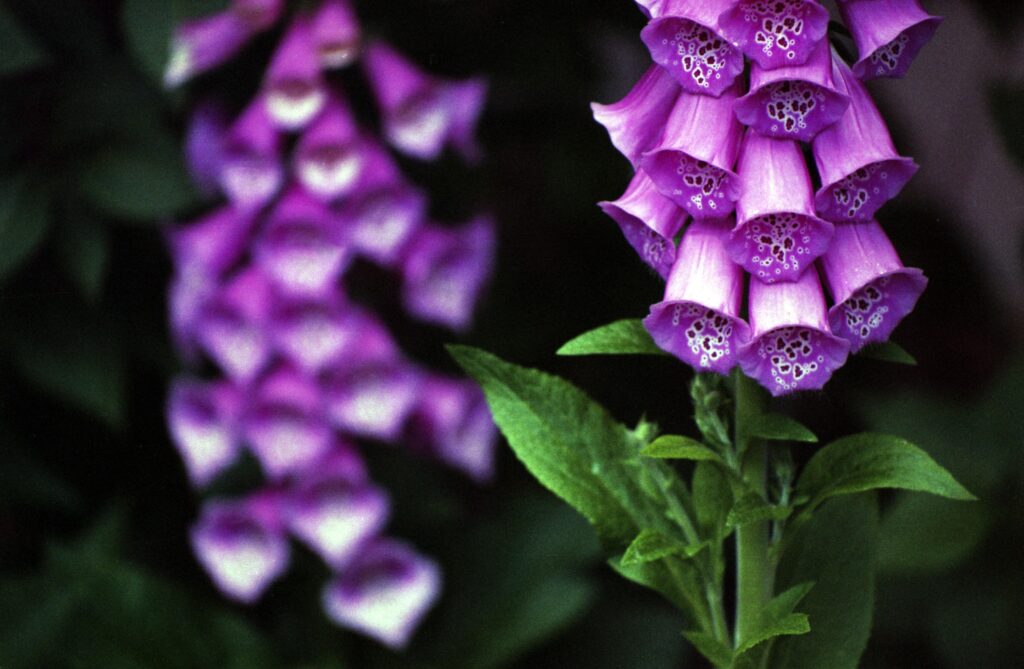It was only weeks ago we were lugging seedlings in and out of the house, playing hide and seek with the frost— yet this morning I’m standing in the back corner of the garden wondering how the peonies could be three feet tall already and the tulips a distant memory.
I’m inclined to call this week – this tiny blip in the year – my favorite. We are still gaining minutes of light every day, the borders are a shade of green that epitomizes spring and the fresh start we’re faced with each year, and the orchestra of bird song becomes more diverse every day.
While we still have plenty of growth and color to come, here a few backyard projects to consider for the early summer garden.

With all that new green growth comes the need for staking. Staking can be as aesthetically simple as you like; it’s simply a physical support of some kind that holds up the floppier plants in your garden. Not everything needs it— most native perennials are strong and adapted to stay standing all summer— but dahlias, peonies, and a host of other colorful additions will benefit from some support. You can make your own w/ a piece of wire, a bucket, and some rolled up sleeves.
First, cut a piece of thick wire about 4 feet long. The length doesn’t matter too much as long as it’s between three and five feet, roughly. Next take a bucket, a tree, or any round surface you can bend your wire around. This will create a semicircular bend in your metal, which will look something like a long hoop. The last step is to simply take the two ends—with roughly a foot and a half of length on each side, and bend them down at 90°. For visual learners like me, here’s a video showing it done. Stick it in the ground in front of your floppier plants, and enjoy taller, longer lasting blooms.

If you planted any annuals – dahlias, zinnias, or other—consider pinching out their leading stems down to the next set of leaves. Plants’ main objective, anytime there isn’t snow on the ground, is to grow. Up, and further up, as high as they can manage in an effort to outcompete nearby neighbors for ample sun, water, and help from pollinators. This simple act of trying to slow down their leading stems will force the plants to find other avenues up towards the sky. Why do we do it? To create bushier, more robust plants, and to increase your flower show by developing many more side shoots.

Many of your perennials will benefit from a similar invention, too, deemed the ‘Chelsea Chop’. Named in reference to England’s famed flower show, the Chelsea chop is a technique used in late spring to manipulate perennial bloom schedules and create bushier plants. Cutting your asters, coneflowers (Echinacea), Shasta Daisies (Leucanthemum), and many other well-known perennials back by about a third encourages stronger plants and later bloom times. It can feel extreme if you’ve never tried it. We’ve watched these plants shoot out of the ground all month, and now we’re cutting off their heads? Yes, but in the name of more flowers.
Turn one plant into four. No matter the space, gardeners aren’t the type to refuse more plants—let alone free ones. Now is a great time to take cuttings from perennials and shrubs. Just above a set of buds or leaves, cut a shoot off your plants. From this new cutting, strip off the lower 50% of the leaves and stick in a pot with a free draining potting mix. As long as it gets consistent moisture, you’ll eventually start to see new leaves form which means roots have started developing on this little clone. After a few weeks of sun and water, you can plant out your new plants wherever you see fit in the garden.
Lastly, look ahead and plan for next spring in the garden by ordering early spring bulbs. There are a host of incredible cultivars—with unique shapes, colors, and sizes—and many growers are sold out of the most popular bulbs by mid-summer. If you place orders now, you can more reliably get what you want, and the growers will wait to ship to you until the recommended planting time in late fall (usually late October, for us).

Yesterday I planted some foxgloves (Digitalis) in the border to bolster late spring color. Within minutes the bumblebees had heard the news and came in, one or two at a time, to explore the peach colored flowers — gracefully but equally deliberate. There’s something about the affirmation afforded us by getting the bees’ acknowledgement so soon after planting; it makes you feel infinitely more involved in your surroundings, and without fail adds a whole lot of meaning to the often-arbitrary nature of gardening.
The next time you’re out in your own space — or in one of Portland’s many parks — take a moment. Listen to the new bird songs that wasn’t there last week and acknowledge the reliable truth that green, lush landscapes come back every year, no matter how we treat them.
Gavin Boyce-Ratliff – Gavin is a professor of horticulture at Southern Maine Community College, and a landscape designer serving all of Northern New England. Gavin lives in Deering with his wife and dog, and can be found in the garden, on the trails, or at the rink. See more of his work here: https://gbrlandscape.com


